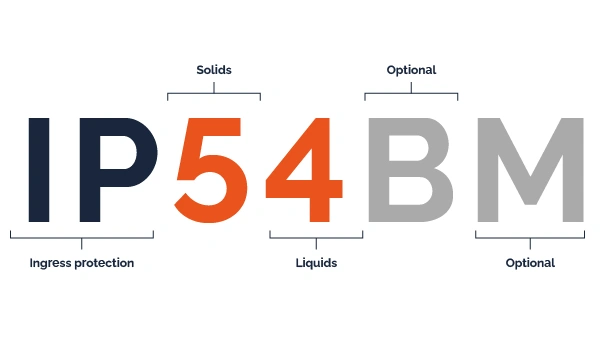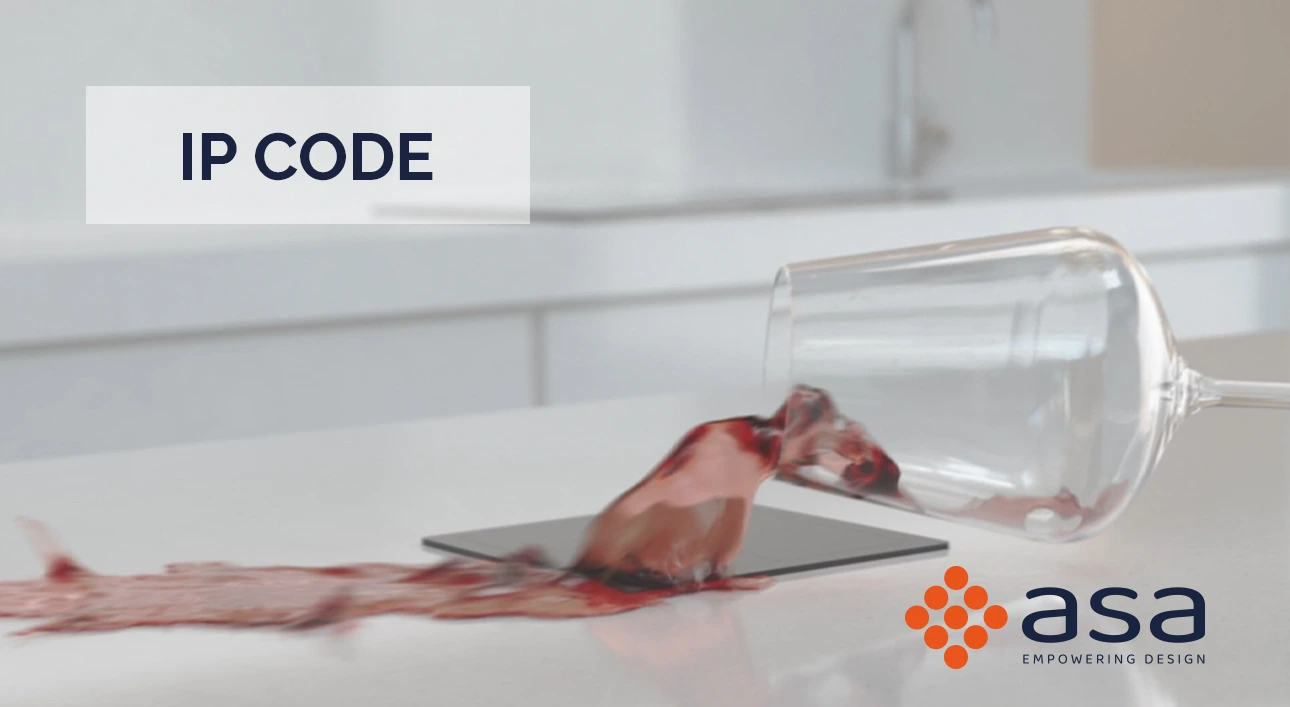Request information
For large buyers or companies it is possible to have price lists with different prices and payment terms.
In specific environments, systems need to be IP certified, which indicates the level of protection electrical and electronic devices have against dust and liquids, such as water.
The abbreviation IP stands for Ingress Protection and includes two digits that specify the exact level of protection.
In this blog, we’ll dive deep into IP protection ratings, providing a helpful guide to understanding and interpreting them so you can fully grasp their meaning.
Many electrical devices, whether used in professional or home environments, have IP certification when exposed to conditions that can impact their performance and potentially cause harm to people or the environment, sometimes with irreversible consequences.
IP protection ratings are defined by the international IEC 60529 standard—which we’ll explain later. They measure how well electrical enclosures protect against the intrusion of dust, water, or other external elements that could damage the system, including body parts like hands and fingers. This standard is equivalent to the European EN 60529.
IP certification is assigned after a series of tests conducted according to the international IEC 60529 standard.
These tests simulate exposure to dust, liquids, and solid objects. The dust protection test evaluates how much particulate matter can enter the device, while the water resistance test involves immersion, jets, and splashes to determine the device’s protection level.
The results of these tests are represented by two digits, which are then combined to determine the device’s overall IP Code.
IP certification follows the internationally recognized IEC 60529 standard (EN 60529 in Europe). Developed by the International Electrotechnical Commission (IEC), this standard is widely adopted in Europe and Asia.

The IP code is essential when choosing an electrical system, as it helps determine where it can be used safely.
As mentioned earlier, the IP (Ingress Protection) code is always followed by two digits and an optional letter indicating the degree of protection.
The first digit (ranging from 0 to 6) refers to the level of protection against solid particles and dust.
The second digit (from 0 to 9) indicates the device’s resistance to water.
A third and fourth digit—typically omitted—indicate the level of protection against mechanical impacts.
As noted earlier, the digits are progressive, meaning an IP rating of 5X offers less protection than an IP rating of 6X, and so on.
Lastly, if an X appears in place of one of the digits, no data is available to specify the protection level against solids or liquids, depending on its position.
If the X replaces the first digit, there is no available data for protection against solid particles; if the X appears in place of the second digit, there is no data for protection against liquids.
For example, a device with an IP5X rating is protected against solid particles but lacks specific information about its protection against liquids.
Please note that the X doesn’t necessarily refer to a lack of protection—it simply indicates that there isn’t enough data to assign a specific rating.
There are 7 levels of IP protection for the first digit, which refers to protection against dust and solid particles, and 10 for the second digit, which relates to the device’s water protection.
The combination of these two numbers creates different protection ratings that determine the durability of electrical devices, ensuring reliability and safety in the environments in which they are used.
The highest level of protection is IP69K, which is assigned to systems designed to withstand harsh conditions. This rating ensures the device is completely sealed against dust and fumes (contact protection), suitable for prolonged immersion (continuous submersion beyond 1 meter), and protected against high-pressure, high-temperature water jets from close range.
This certification makes these devices ideal for industrial environments or sectors like the food industry, where frequent cleaning operations are required.
READ ALSO:
Recessed multi-socket outlets for furniture: the ultimate guide
Protection against solid objects
| IP | Meaning |
| 0 | No protection |
| 1 | Complete protection against solid objects over 50 mm in diameter |
| 2 | Complete protection against solid objects over 12 mm in diameter |
| 3 | Complete protection against solid objects over 2.5 mm in diameter |
| 4 | Complete protection against solid objects over 1 mm in diameter |
| 5 | Complete protection against dust (no harmful deposit) |
| 6 | Complete protection against all types of dust |
Protection against liquids
| IP | Meaning |
| 0 | No protection |
| 1 | Complete protection against vertically falling water drops |
| 2 | Complete protection against falling water drops or rain up to 15° from vertical |
| 3 | Complete protection against falling water drops or rain up to 60° from vertical |
| 4 | Complete protection against splashing water from all directions |
| 5 | Complete protection against water jets |
| 6 | Complete protection against powerful water jets |
| 7 | Complete protection against the effects of temporary immersion |
| 8 | Complete protection against the effects of continuous immersion |
IP 44
The product is protected against solid objects larger than 1 mm (e.g., wires, small tools) and water splashes from any direction.
IP 65
It is fully protected from dust and against low-pressure water jets from any direction.
IP 24
The system is protected against solid objects larger than 12.5 mm and water splashes from any direction.
IP 68
The system is fully protected from dust and against prolonged immersion in water. The depth and duration of immersion vary by manufacturer.
IP 67
This equipment is protected from dust and against temporary immersion in water (typically up to 1 meter deep for 30 minutes).
IP 20
The product is protected against solid objects larger than 12.5 mm but not against water.
IP X7
The "X" indicates that protection against solid particles is not specified. This apparatus is protected against temporary immersion in water.
IP 6X
It is protected from dust, but the level of water protection is not specified.
IP 54
The system is protected from dust (not completely sealed) and against water splashes from any direction.
When choosing a power strip, it’s essential to carefully assess the IP rating, especially if it will be used in environments exposed to moisture or dust. For instance, kitchen multi-socket outlets need proper protection to reduce the risk of short circuits or electrical issues in these conditions.
In this regard, the ASA range offers a series of IP-certified systems that are ideal for both professional and home kitchens.
VersaHit, both compact and versatile, has an IP54 rating when the cover is closed, making it perfect for easy installation on countertops, even with drawers or appliances nearby.
ASA also recommends concealed power supply towers that are water-resistant when closed, like the VersaElite, which features a rubber seal to prevent dust and water infiltration, ensuring safe and reliable use, or VersaLift, a new model with a sleek, minimalist design.
IP-certified power strips offer vital protection against dust and water, making them perfect for various applications in both indoor and outdoor settings.
Home environment
Anche in casa, una multipresa con protezione IP può essere utile in ambienti come il bagno o la cucina, dove l'esposizione all'umidità è maggiore. Insomma, ovunque sia necessario garantire la sicurezza elettrica in presenza di polvere o acqua, una multipresa con certificazione IP rappresenta una soluzione affidabile e pratica.
Office
In office settings, IP-certified power strips are ideal for powering electronic devices in areas where dust or moisture may be present, such as near printers, scanners, or coffee machines. The IP protection ensures the safety and reliability of your equipment, helping to prevent damage from environmental factors.
READ ALSO:
How to organise your office desk
Hotels (Outdoor)
In hotels, IP-certified power strips can be installed in outdoor areas like gardens, terraces, or pools to power lighting, audio systems, or charging devices for guests. Their resistance to dust, water, and weather ensures that equipment operates correctly under any conditions, providing comfort and safety for guests.
For large buyers or companies it is possible to have price lists with different prices and payment terms.
